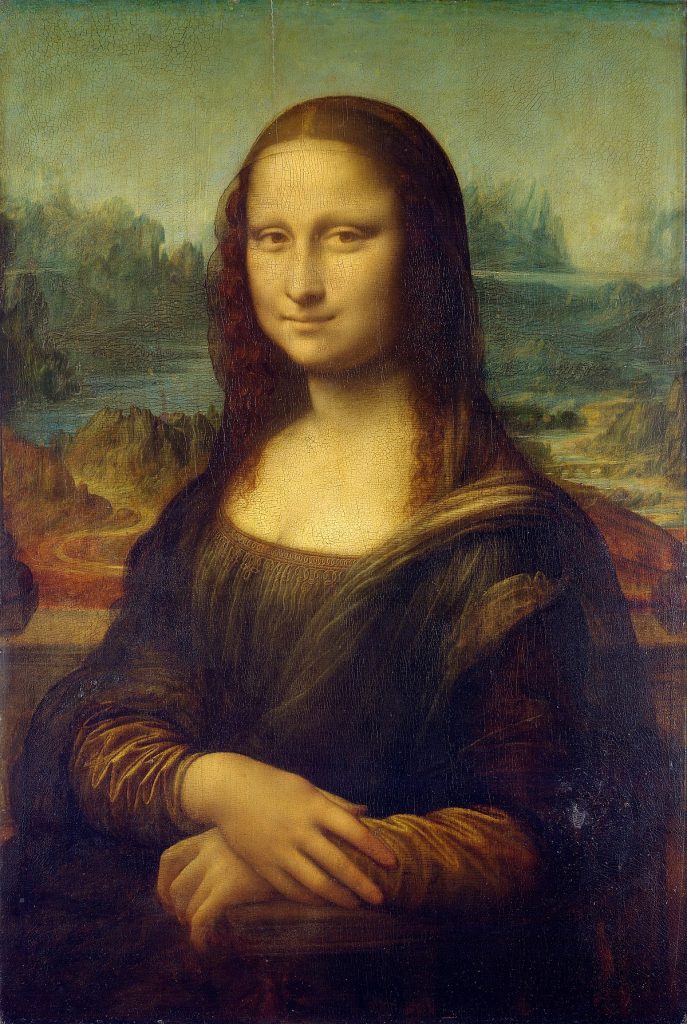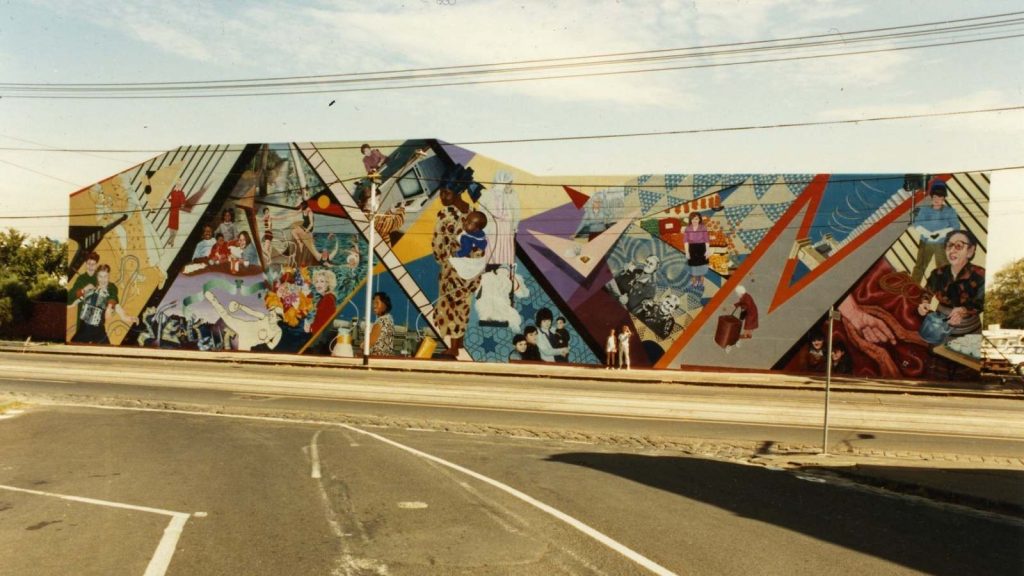Over the weekend we reported that an unknown artist has given a Banksy mural a COVID-19 update. The piece of art in question is the Girl With The Pierced Eardrum located in Bristol’s Harbourside, and following the vandalism, the girl is now wearing a surgical facemask – very 2020.
In light of that, we thought we’d go back through history and bring you some of the most famous, most ridiculous, and most controversial art vandalisms of all time. Sit back, relax, and prepare yourself for some real-life art attacks.

From dynamite to lipstick kisses, the Mona Lisa to Andy Warhol, check out our list of some of the most controversial art vandalisms of all time.
1. The Mona Lisa is met with rocks, mugs, and more
The world’s most famous painting has certainly copped a considerable amount of vandalism – four attacks to be precise. The first two occurred in 1956, and during the earliest one, the bottom of the Leonardo da Vinci painting was drenched in acid. The second vandalism saw a Bolivian man named Ugo Ungaza Villegas throw a rock at it, causing the painting to chip. Apparently, Villegas was a homeless man who wanted to go to prison so he could have a warm bed to sleep in.
In 1974, when the painting was on loan at the Tokyo National Museum, a handicapped woman angered by the lack of disabled access, spray-painted the artwork with red paint. Luckily she didn’t do too much damage. Then, in 2009, when the Mona Lisa was back at The Lourve, a Russian woman threw a mug at it after being denied French citizenship. She had purchased the mug in The Lourve’s gift shop.

2. The curious case of kissing vandalism in art
In 2007, French-Cambodian artist Rindy Sam was fined after kissing a painting by American artist Cy Twombly, ultimately leaving a lipstick mark on the canvas. The painting in question was a completely white canvas called Untitled, worth around $2.5 million. It was displayed at the Lambert Collection in France.
Speaking in court, Sam described that she was “overcome by passion” when she saw the painting. The court ordered her to pay 1,500 euros to the owner, 500 euros to the gallery, and a symbolic one euro to the artist.

It’s not the first time that an artwork has been vandalised by an act of kissing. At the São Paulo International Biennial in 1996, a painting from Andy Warhol‘s 1977 series Torsos which featured male and female nudes, was kissed by a Brazilian woman. According to a Brazillian newspaper, the kiss was right “over the penis”. Luckily the lipstick was removed and the woman wasn’t arrested.
Yet another Andy Warhol painting was vandalised by kissing the following year when The Warhol Museum hosted a party for Chanel No. 5. During the incident in question, an anonymous drunken guest left a Chanel lipstick kiss on an early Warhol painting of a bath. As the surface of the painting was extremely raw, it took 8 hours for the kiss to be removed, and someone from NASA was even consulted about the use of atomic oxygen as a cleaning agent.

3. Scott Marsh’s The Happy Ending is covered up
Australian artist Scott Marsh‘s The Happy Ending was painted in Newtown in support of same-sex marriage back in 2017. The controversial painting featured ex-Prime Minister Tony Abbott getting intimate with the (now-acquitted) disgraced child abuser, Cardinal George Pell.
Even more controversial than the painting itself was its removal less than 24 hours after it was finished, much to the dismay of local residents. A group of men covered the mural with black paint, claiming that the artwork was offensive to people of Christian faith. Following its removal, Marsh commented that it was meant as a satirical piece supporting same-sex marriage, and was not intended as a religious attack.
4. Dynamite and The Thinker
Surely one of the most violent vandalisms in the art world, in 1970 French sculptor Auguste Rodin’s famous work The Thinker was blown up by dynamite. The explosion annihilated the base and legs of the sculpture, leaving it lying face down. A conservation report described: “The Thinker lay face down, apparently contemplating Hell much more directly.”
Whilst no one was charged with the crime, rumours attributed it to a radical student activist group Weather Underground. It’s thought that they may have viewed the sculpture as a symbol of elitism and targetted it in their protests of the Vietnam war.
The damage was so extensive, officials decided not to try and repair the sculpture and to this day it is exhibited with the bottoms of its legs and base missing.

5. Smith Street Feminist Mural is capped
Back in 2016, a historic feminist mural on Melbourne’s iconic Smith Street was defaced by a prolific Melbourne graffiti artist by the name of NOST, who graffed his tag over the artwork.

The mural was painted back in 1986 by Melbourne artists Eve Glenn and Megan Evans, who came up with the idea as a response to the media’s objectification of women. The vast painting featured various real-life women living in Northcote, including an Aboriginal woman, a woman who owned a Lebanese milk bar, as well as other immigrants, gay women, and other women old and young.

NOST had a history of painting over other people’s artworks, and these acts were often motivated by ill will he felt towards street artists who in turn had painted over walls bearing graffiti tags. In 2017, NOST was jailed for numerous criminal offences. Sadly, the Smith Street mural was unable to be salvaged.
6. Banksy and the eternal vandalism of art
Over the years, Banksy’s art has been subjected to numerous vandalisms, with people even removing parts of walls so that they could sell them.
Aside from the most recent coronavirus vandalism, earlier this year his Valentine’s Day artwork was defaced only days after it was created, with someone crawling “BBC Wankers” over the work. Banksy came out and said he was glad it had been defaced because he believed the initial sketch to be better.

Elsewhere, Banksy’s mural of Steve Jobs as a migrant was defaced back in 2016. Vandals smashed the glass case that protected the artwork, and wrote “London calling” around it, using Jobs’ body as the letter “i”. The artwork, sprayed on the wall of a refugee camp in Calais, was intended as a statement in celebration of multiculturalism in the face of the refugee crisis. The work referenced the fact that Jobs – the founder of the trillion-dollar tech company Apple – was in fact the son of a Syrian migrant.
For as long as there is art, there will continue to be vandalism. Whilst in some cases – like kissing – vandalism represents an expression of appreciation, in many cases, it serves as something darker. Vandalism throughout history offers an incredibly interesting record of the everyday struggles of humans at different times. For the sake of art though, hopefully, it’s something we ultimately leave behind us.



